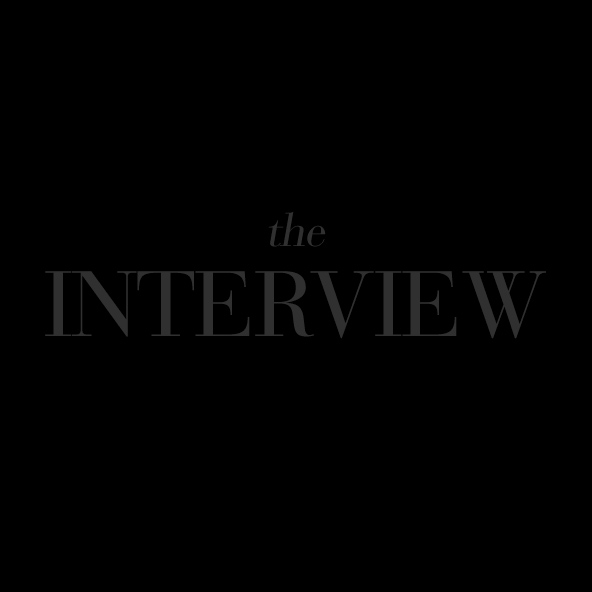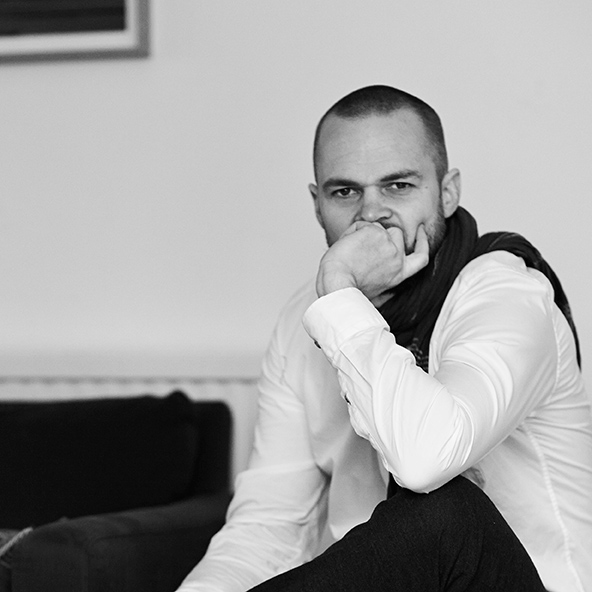Gunnar Tufta - A Darker Perspective
BY STEPHANIE CAJUCOM
Tufta’s work is dark and mysterious. Alluring and intriguing, it seduces the viewer into a deeper dose of not just fashion, but story. His works are a mix of grit and elegance and are always captivating. With raw seduction and dramatic twists, Tufta delivers work that stuns the senses and hypnotizes, making him a memorable industry maven.
Norwegian mastermind, Gunnar Tufta, got his hands on his mother’s camera at age 14 and never let go. Propelling his passion into new heights, he enrolled in photography classes and learned everything he could about the craft. Through rigorous training at the Photography Department in the Norwegian Navy and an extensive photojournalism course at AFR he landed a highly coveted job at world-renowned publication BergensAvisen.
His lens began to gravitate towards the femmes of fashion and he moved to Sweden to work for famed fashion photographer Carl Bengtsson. He built a worldwide portfolio of campaigns, covers, and editorials and decided to move onto London on his own. After working with top-notch photographers like Nick Knight, and Nadav Kander he created a name for himself as an esteemed fashion photographer.
Tell us about Gunnar Tufta, the photographer? Is he different than Gunnar the individual?
Work is my first priority in life, and it has been this way for many years. I think because my work is so important to me it naturally reflects who I am.
One difference is that as a person I’m not looking for attention and have never been seeking the spotlight. I am however happy for my images to attain that attention.
You grew up in Trondheim, Norway, where you started your journey into photography?
I was fourteen years old when I found my mother’s system camera, a Pentax. I found the world to be an amazingly beautiful place when seen through the lens. You could choose the focus and priority of that around you in a way not possible with the eye. I remember clearly that the neighbor’s garden decoration, a quite tasteless piece, containing a small fountain with a pink plastic Pelican, looked amazingly beautiful through the viewfinder. Instead of being a part of the real world it was like observing a quiet scene in a movie. Around the same time I bought a compact Canon camera. And although I enjoyed the camera, it did not capture the same magic as the Pentax did.
At school I joined the photography class where we learnt the basics of shutter and aperture, I found these basics quite natural and experimented with different settings and techniques. I have always been a very curious person, about everything, this has been a clear drive to constantly develop my skills. I have a constant desire to learn as much as possible. But I think the magic of observing the world as it goes by is what has kept me focused and intrigued.
I think another important aspect is my vivid imagination, living experiences through books and movies. Once as a kid I worked on a essay for a school assignment. I had chosen to write a horror story. I started writing it when I was alone in the house after school, but I had to stop half way through. My imagination created amazingly vivid images that scared me too much and I waited to finish it after my parents arrived home.
I think this vivid imagination has stayed with me, but I’m not afraid of the dark.
You have worked for some very interesting photographers, Carl Bengtsson, Nick Knight, Craig McDean, Davis Sims and Nadav Kander, tell us about that?
I have continuously wanted to learn more about photography to see if it was a field I wanted to pursue. I was originally looking at applying to London college of Printing when I came across a photographer from my home town who advised that I seek out work as an assistant, suggesting Sweden as a start. He gave me the contacts for 5 Stockholm based photographers. Swedish photography and fashion industry was far more developed than in Norway.
I packed my bags and booked a ticket. I arrived without a place to stay, but on a tip I was lucky enough to find temporary accommodation in the Norwegian Seaman’s Church. I started knocking on the doors of these photographers. The ones on my list all had their full time assistants. After a month of chasing new connections and knocking on doors I met a food and garden photographer looking for a full time assistant and I started immediately. I knew that my interest was in working with people and after a year I moved on and was offered a position with Carl Bengtsson. I had two fantastic years working with him.
After these two great years I again needed to challenge myself. I felt I would get too settled in Stockholm unless I moved on. This lead to my next move, London, where I started again knocking on doors, looking for work as an assistant. One of my first assistant jobs was with Nadav Kander, who curiously interviewed me whilst giving me the impression he was someone else. I ended up worked with him as a freelance assistant over the next few years.
London was a dramatically different working environment, with more pressure, something I felt I thrived under. I always tried to work with the top photographers with the goal of learning as much as possible. I never considered my own work important during this period of assisting. My full focus was on doing my job as well as I possibly could and to work with the best people possible.
You recently arrived to New York from London, how do you find it so far?
My visit to NY has been amazing and eventful! My sister has lived in NY for over 10 years so I have visited fairly regularly. The last three years I have taken a few months out over christmas to spend in NY. Recharge and prepare to create images. Compared to London I find the social atmosphere very positive, people are interested in connecting and eager to hear about everyone’s work and projects. I have always felt that NY was the ideal place for me to continue developing my career.
I absolutely love the energy of the city and it’s people.
Your images are very powerful and have an element of surprise in them, what triggers your imagination?
I love the glamour, the beauty and the dream of the fashion industry. An industry created to sell fashion, clothes, and accessories fueled by aspiration, political and social dialogue which leaves imagination take full control. This truly imaginative freedom is for me the most interesting aspect of the fashion industry.
You capture glamorous elements in bizarre settings creating a true paradox of the situation. How do you come up with these ideas?
I want to tell stories about strong interesting individuals. I think most people have an inner crazy side that is more or less controlled.
I think it is interesting to imagine what goes on in a seemingly perfect world. How someone’s inner life looks when it comes out as if no-one is around. One example is a perfect girl in a perfect life, so bored that she puts on the most amazing outfit and goes bobbing for apples in her own kitchen.
Sometimes this control of the mind is a balancing act close to the edge, and the thought of it tipping over to portray an interesting scenario.
I also really appreciate the beauty of difficult situations and struggles in life. I find hurt, pain, loneliness, frustration and restlessness are beautiful emotions. To me there is a pureness and innocence connected with this pain and a strength connected with sharing it.
Maybe I share this through the work I do.
-- Interview by Anna Maria Sandegren





